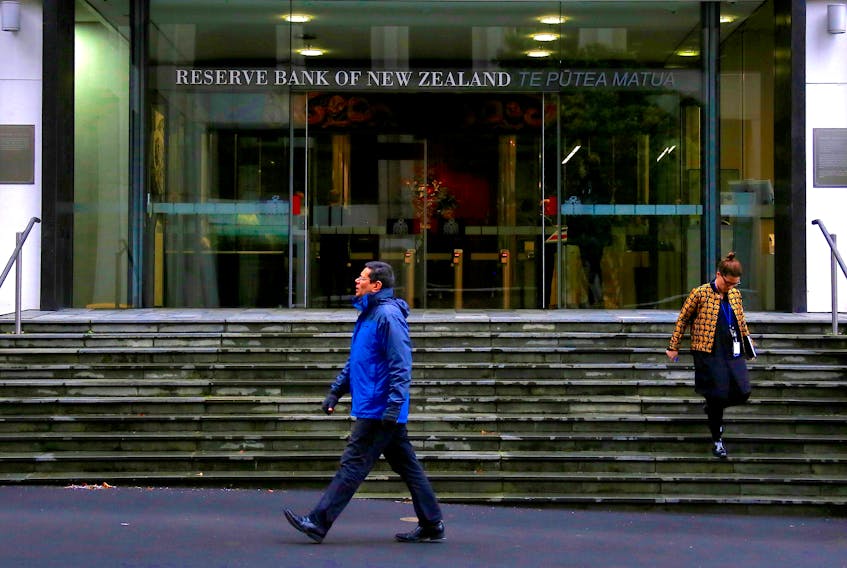By Praveen Menon and Charlotte Greenfield
WELLINGTON (Reuters) - New Zealand's central bank held interest rates steady on Wednesday but said further cuts to borrowing costs may be needed given growing economic risks at home and abroad.
The Reserve Bank of New Zealand (RBNZ) kept the official cash rate (OCR) at a record low of 1.50%, as expected, and in a strikingly dovish statement warned that a global slowdown is hurting the domestic economy amid intensifying trade risks.
"The global economic outlook has weakened, and downside risks related to trade activity have intensified," the RBNZ said.
"Given the downside risks around the employment and inflation outlook, a lower OCR may be needed," it said, having lowered the cash rate by 25 basis points at the last meeting in May.
The dovish statement mirrored a recent shift by global central banks to ease monetary policy to combat rising economic risks as a year-long Sino-U.S. tariff war dents trade, corporate profits and overall growth.
"Given the tone of this statement from the RBNZ, we remain of the view that the RBNZ will most likely cut the OCR in August," said Westpac Chief Economist Dominick Stephens.
"The repeated comment that a lower OCR may be needed is blunter than the language used in March, which was followed by a cut in May," he said.
Markets imply around a 63% chance of a reduction to 1.25% at the central bank's next meeting on August 7, and are wagering heavily on 1% by year end.
Minutes of the RBNZ review released along with the statement showed policymakers discussed whether to cut at the meeting and decided that more monetary easing was "likely to be necessary" over time.
Last week both the U.S. Federal Reserve and the European Central Bank reversed course and opened the door to new stimulus, while the Reserve Bank of Australia (RBA) has said it's likely to ease again to follow up from its cut earlier this month.
The New Zealand dollar was largely unchanged, rising just 0.2% to $0.6646 after the rates decision.
GLOBAL RISKS
In its statement the RBNZ said it expected inflation to rise to the 2 percent mid-point of its target range, and employment to remain near its maximum sustainable level, but didn't give a time frame.
Sino-U.S. trade tensions as well as softening domestic housing and immigration growth have put pressure on New Zealand's economy.
A slowdown in China, New Zealand's biggest export market, is a key concern for policymakers, just as it is for many other nations whose economic fortunes are closely linked to the Asian giant.
Dairy exports, particularly to China, helped push New Zealand's exports higher in May.
"The weaker global economy is affecting New Zealand through a range of trade, financial, and confidence channels," the central bank said.
It said the softer house prices and subdued business sentiment continue to dampen domestic spending.
Indeed, while gross domestic product growth figures released last week topped expectations, the broad picture highlighted a soft underbelly.
The Treasury department last month cut its GDP growth forecast to 2.1% for the 12-months ending June 30, from the 2.9% expansion predicted in December.
"Upside risks to inflation and employment are becoming few and far between," ANZ analysts said in a note to clients, tipping rate cuts in August and November.
(Reporting by Praveen Menon and Charlotte Greenfield; Editing by Shri Navaratnam)









